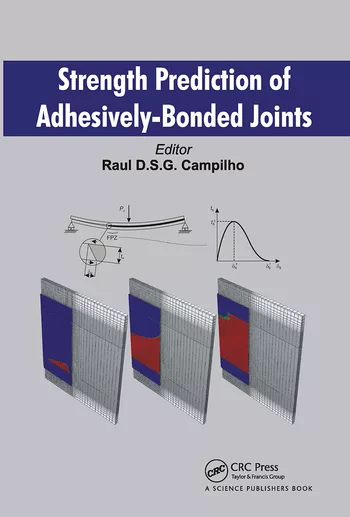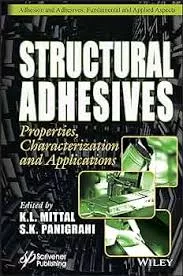Lightweight, High-Strength Solutions for Automotive Applications
When combined with structural adhesives or overmolded thermoplastics, composite putrusion systems* help deliver high-strength, lightweight macrostructures that can help automotive manufacturers meet efficiency goals while optimizing costs.

Make it lighter. Make it stronger. Manufacturers in automotive and other industries are no strangers to these initiatives. How can companies meet these objectives when they seem to pull engineering teams in opposite directions?
Composite pultrusion systems* can help achieve ultra-strong and lightweight structures at cost-competitive rates. This technology represents an alternative (or addition) to traditional steel or aluminum structures, which can be heavier, weaker, and more expensive than composite technology, especially when factoring in the tooling costs.
Pultruded composites are continuous fiber-reinforced materials that can be used as a main structure and, when combined with sealants or structural adhesives, create a unified macrostructure. This constant cross-section pultrudate is designed to provide strength, stiffness, and rigidity to a lightweight structure; when combined with injection molding, the resulting three-dimensional shape can be adapted to fit many applications.
The technology is currently used to strengthen and reinforce crossmembers, composite tunnel reinforcements, and seatbacks. Additional applications in the automotive industry and beyond are also being explored.
Strength, Weight, and Cost Optimization
Composites can handle large loads and capture significant energy during safety events. When bonded to steel or aluminum structures, composites enable a cost-effective reinforcement solution that is 75% lighter than steel and 30% lighter than aluminum. Compared to high-strength steel, composite pultrusion systems* can deliver equal flexural strength at a fraction of the weight by themselves.
A process developed by L&L Products enables the manufacture of straight parts with constant cross-sections, delivering consistent, high-strength components. The process enables the higher processing speeds that are necessary to improve the value proposition and maximum capital utilization. In addition, multiple outputs can be accommodated, with one machine feeding more than one die.
High throughput rates can be achieved with the combination of low line rates and inexpensive die costs, resulting in a cost-competitive solution with value that exceeds the alternatives. The technology applies adhesives to parts in a continuous process, reducing manufacturing costs and time to delivery. In addition, state-of-the-art manufacturing equipment is capable of capturing data to regulate quality, apply adhesives, and then robotically transfer parts to packaging or post-processing in a seamless, cost-efficient process.
Ford F-150 Lightning Crossmember Reinforcement
BASF and L&L Products joined forces to develop a battery protection solution for the 2022 Ford® F-150 Lightning™ pickup, which was the company’s first electric F-Series truck. To accommodate the battery enclosure, which needed extra room, the objective was to provide a smaller crossmember while providing the same strength as a full-size crossmember. The crossmember is a structural section designed to withstand high loads to keep the battery and occupants safe in the vehicle.
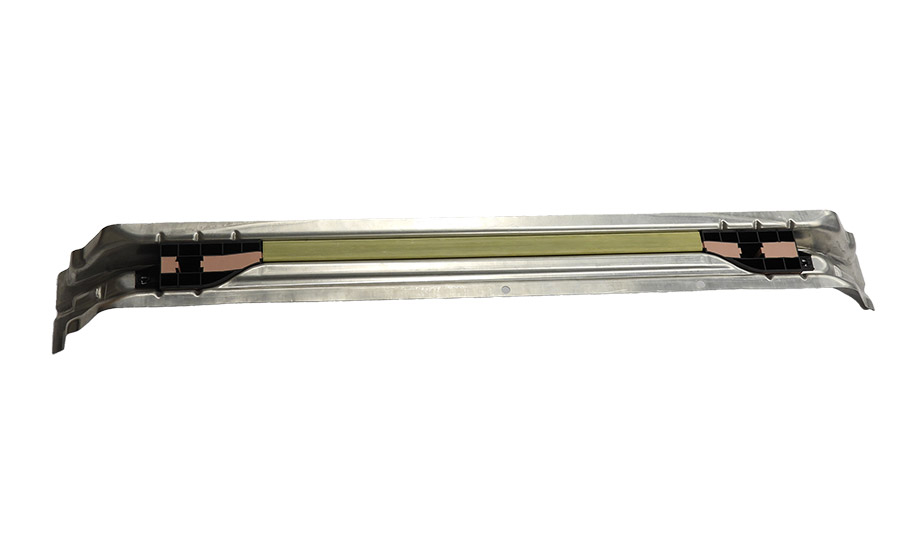
The redesigned crossmember in the 2022 Ford F-150 Lightning provides the same strength as a full-size crossmember.
This application brought three “firsts” for composite pultrusion systems: the first closed-section pultruded tubular part, the first body-in-white application, and the first use on an electric vehicle. The pultruded composite crossmember was also the first application for BASF’s new polyurethane pultrusion system to be implemented prior to the e-coat process.
Jeep Grand Cherokee Composite Tunnel Reinforcement
While researching opportunities to reduce mass and improve durability without compromising safety performance, the Jeep® Grand Cherokee’s transmission mounting system (TMS) was one area of focus. The composite tunnel reinforcement (CTR) is located on the underside of the vehicle and is part of the overall TMS. In the event that a vehicle collides slightly off-center with an opposing vehicle, for example, the CTR transfers the energy load from the outer rail to the transmission mount crossmember, improving performance in A-side pole impact or in the Insurance Institute for Highway Safety’s (IIHS) small offset rigid barrier test.
The use of the L&L composite pultrusion system along with polyurethane chemistry from BASF were key factors in the success of the CTR, enabling Stellantis to realize a new design that reduces space along with mass and uses the surrounding environment on the vehicle to help transition loads to the CTR. The system was designed to carry a 70-kN (15,700-lb) load cross-car in a shallow offset crash event.
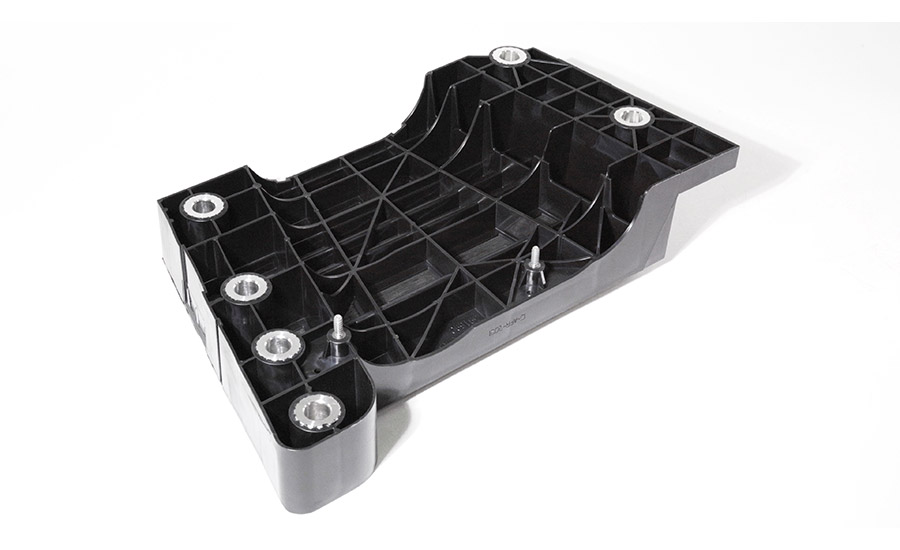
The new composite tunnel reinforcement (CTR) design of the Jeep Grand Cherokee reduces space along with mass and uses the surrounding environment on the vehicle to help transition loads to the CTR.
This was also the first application for L&L Products’ composite pultrusion system and BASF’s new polyurethane pultrusion system. “Our polyurethane chemistry coupled with continuous glass fiber has a superior strength-to-weight ratio compared to ultra-high-strength steel when used in these kinds of applications,” said Chris Korson, Chassis Market Segment manager, Performance Materials, BASF Corp.
For this application, BASF, L&L Products, and Stellantis were recognized for lightweighting success on the composite tunnel reinforcement, winning the Altair Enlighten Award for achievements in vehicle weight savings of 4.6 lb over the traditional steel clamshell design. In addition, the assembly process was improved with the use of molded-in clips, compression limiters, and threaded studs. Finally, technology improvements enabled the team to achieve an industry first in processing speeds, doubling the typical profile pultrusion output.
Toyota Tundra Seat Structure
In an interior example, Toyota needed a strong, lightweight solution for the rear seat frames on its Tundra. The previous generation of this vehicle had seat frames that were constructed from over 60 steel components, resulting in high manufacturing costs, numerous weld points, high scrap rates, and a more complicated quality inspection process.
L&L again partnered with BASF, along with Flex-N-Gate and Toyota, to develop an all-new composite resin seat frame for the 2022 Tundra. Constructed with an overmolded pultruded crossmember in the seat back, this seat frame is strong and lightweight, with the 60+ steel components reduced to only four molded parts. The need for fewer parts results in less scrap and reduced manufacturing costs.
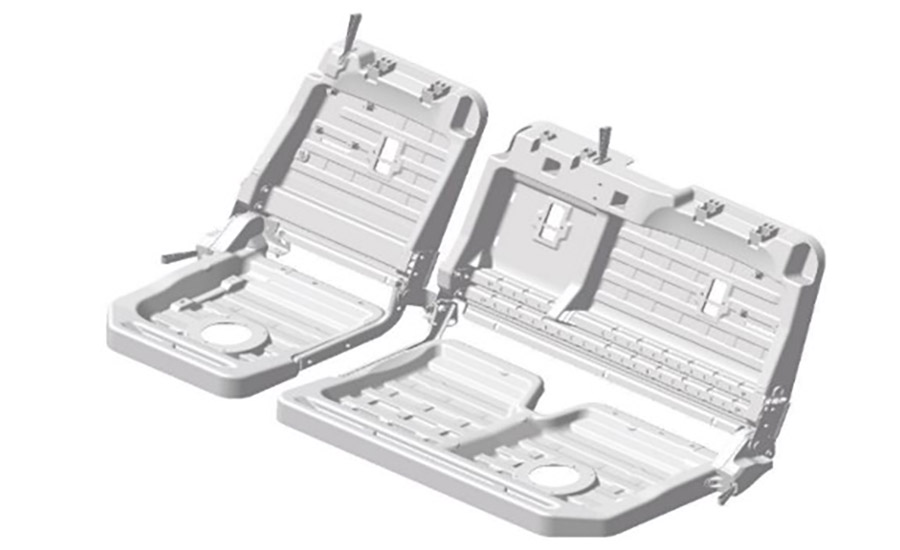
The composite resin seat frame in the Toyota Tundra is strong and lightweight, with the 60+ steel components reduced to only four molded parts.
Quality inspections are significantly easier with the composite seat assembly, with no more need to sort and scrap assemblies due to bad welds. Quality evaluation of composite parts is now fully automated and accomplished through sensors and software that monitors the molding process.
In the end, cost and mass were decreased by 20%. As an added benefit, fold-down seats and under-seat stowage became a new feature that was made possible by the new composite seat design. Plus, the seat frame is now shared between the double cab and crew/max cab vehicles, where unique steel structures had previously been needed for both.
Computer-Aided Engineering
Engineering expertise and computer-aided engineering (CAE) modeling capabilities are a critical aspect of composite pultrusion systems for producing and optimizing unusual part designs, enabling parts to be validated even before they are created. Conventional computer methodologies break down at the initial point of failure with composites. These methods cannot reconcile the behavior of one component of the composite system failing while the other remains intact. This leads to catastrophic failure in the model and ignores the massive post-failure energy absorption in the actual part.
Through a rigorous testing plan and thousands of hours of simulation time, this shortcoming has been addressed to simulate the continuous fiber composite behavior in these types of applications. Material cards for the pultruded material have been developed that allow for accurate performance prediction, stiffness, and crash events while capturing the additional load after failure that a composite provides.
For more information, visit www.llproducts.com.
*Continuous Composites System™ (CCS™)
Images courtesy of L&L Products.
Looking for a reprint of this article?
From high-res PDFs to custom plaques, order your copy today!





